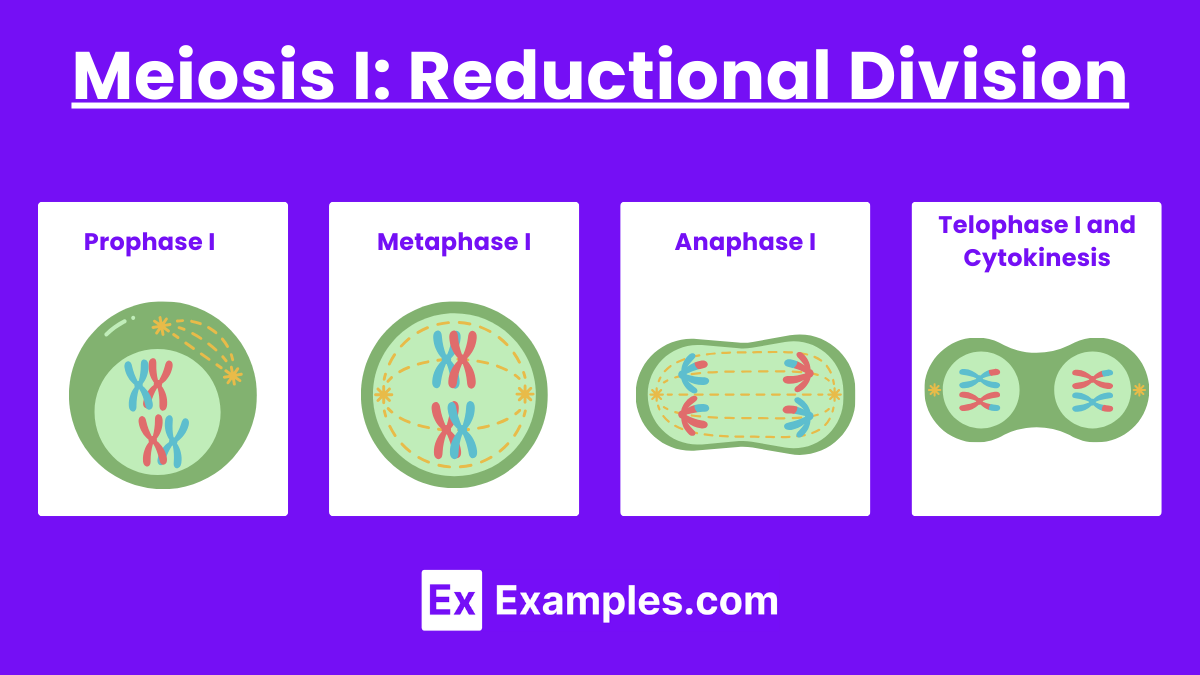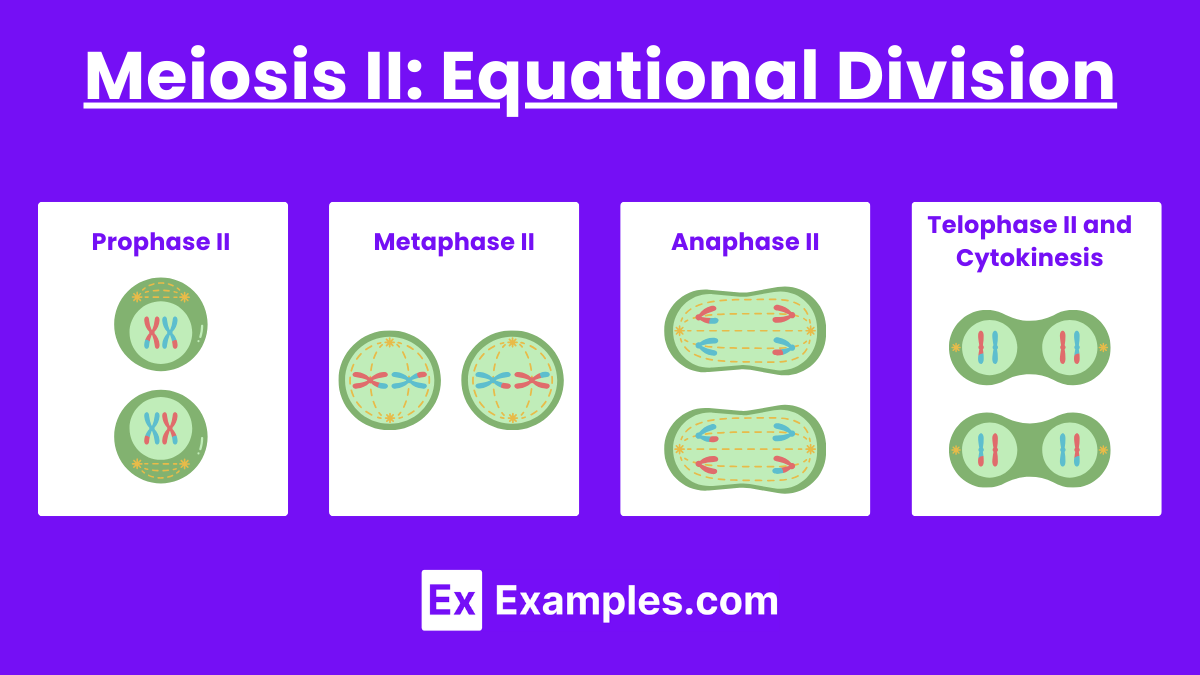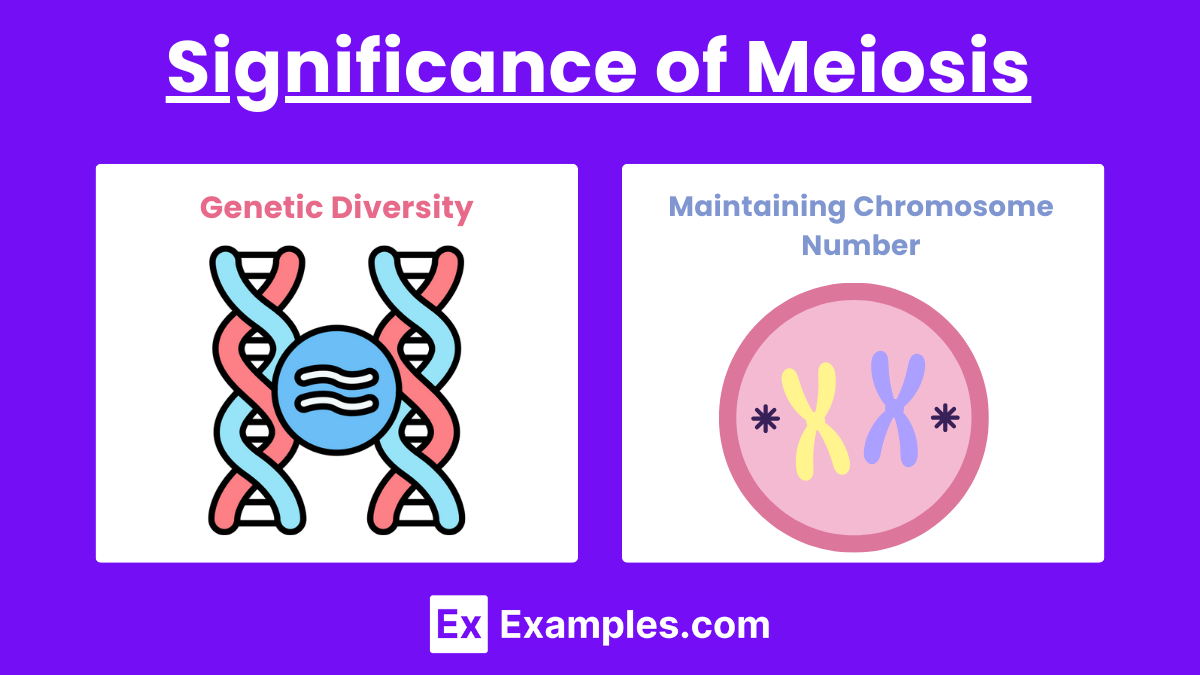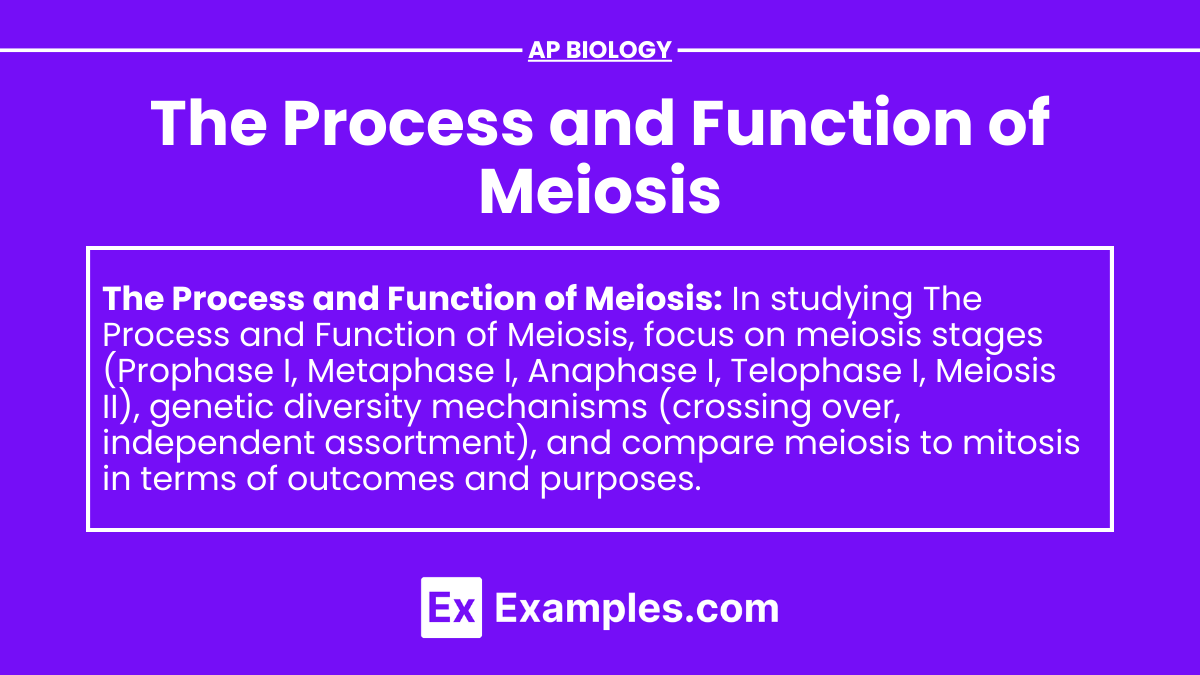Meiosis, a key topic in AP Biology, is a specialized form of cell division that reduces chromosome number by half, creating four genetically unique haploid cells from a diploid cell. Unlike mitosis, which produces identical cells for growth and repair, meiosis ensures genetic diversity through processes like crossing over. Critical structures such as the centriole play a vital role in chromosome segregation during this complex, two-phase division process essential for sexual reproduction.
Learning Objectives
By studying meiosis, students will understand its role in reducing the chromosome number by half during cell division, producing four genetically unique haploid cells from a diploid parent cell. They will learn to distinguish between the stages of meiosis and their significance within the cell cycle, recognize how genetic diversity is achieved, and compare meiosis with mitosis, emphasizing their distinct functions in growth, repair, and reproduction.
Overview of Meiosis
Meiosis consists of two sequential divisions: Meiosis I and Meiosis II. Each division includes prophase, metaphase, anaphase, and telophase stages, resulting in four genetically distinct haploid cells from a single diploid cell.
The Stages of Meiosis
Meiosis I: Reductional Division

Prophase I
Chromosomes condense and become visible.
Homologous chromosomes pair up (synapsis) forming tetrads.
Crossing over occurs at chiasmata, exchanging genetic material between non-sister chromatids.
The nuclear envelope dissolves, and the spindle apparatus forms.
Metaphase I
Tetrads align at the metaphase plate.
Spindle fibers attach to the centromeres of homologous chromosomes.
Anaphase I
Homologous chromosomes are pulled to opposite poles by the spindle fibers.
Sister chromatids remain attached at their centromeres.
Telophase I and Cytokinesis
Chromosomes arrive at the poles.
The cell divides into two haploid daughter cells, each with half the original number of chromosomes.
Meiosis II: Equational Division

Prophase II
Chromosomes condense again if they had decondensed.
The spindle apparatus forms in each haploid cell.
Metaphase II
Chromosomes align at the metaphase plate in each cell.
Spindle fibers attach to the centromeres of sister chromatids.
Anaphase II
Sister chromatids are finally separated and pulled to opposite poles.
Telophase II and Cytokinesis
Chromatids arrive at the poles.
Nuclear envelopes reform around each set of chromosomes.
Each cell divides, resulting in four genetically distinct haploid cells.
Significance of Meiosis

Genetic Diversity: Crossing over and independent assortment of chromosomes during meiosis I lead to genetic variation in gametes.
Maintaining Chromosome Number: Meiosis ensures that offspring have the same chromosome number as their parents by producing haploid gametes that fuse during fertilization to form a diploid zygote.
Comparison of Meiosis and Mitosis
Feature | Mitosis | Meiosis |
|---|---|---|
Number of Divisions | One | Two |
Number of Daughter Cells | Two | Four |
Genetic Composition | Identical to parent cell | Genetically unique |
Role in the Body | Growth, repair, asexual reproduction | Sexual reproduction, producing gametes |
Chromosome Number | Maintained (diploid) | Halved (haploid) |
Pairing of Homologues | No | Yes, during prophase I |
Crossing Over | Rarely | Yes, during prophase I |


